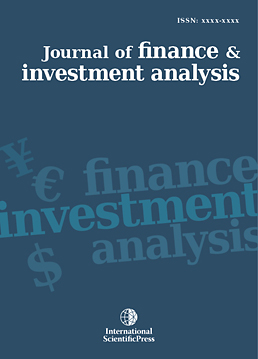Journal of Finance and Investment Analysis
The Dividend Puzzle: A Summary Review of Explanations
-
 [ Download ]
[ Download ]
- Times downloaded: 11461
-
Abstract
Academics like to raise what-when-whether-why-how questions on interested topics. Nearly sixty years ago, J. Lintner has developed his model to explain how dividends are determined. Twenty years later, F. Black has asked why some firms pay dividends while others do not, and has written his famous paper “The Dividend Puzzle.” And in-between, we have the dividend irrelevancy theory developed by Miller and Modigliani. After several decades with relentless effort by economists researching on the topic, the puzzle still seems to be here. Lots of theories or hypotheses have been developed to help understand the puzzle and what factors determining the distribution policy of a firm. This paper gives a summary review of those major explanations.
